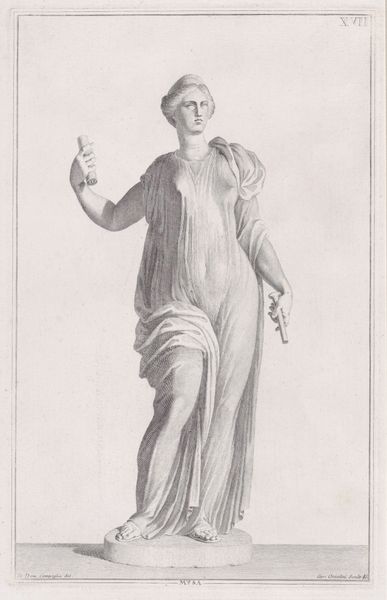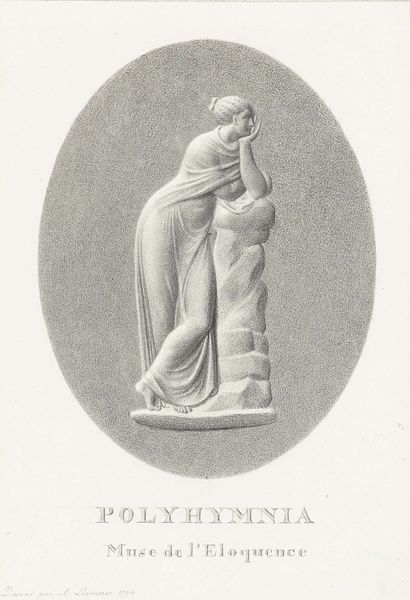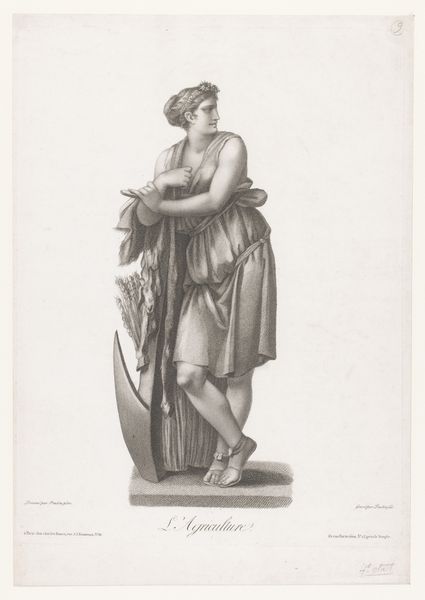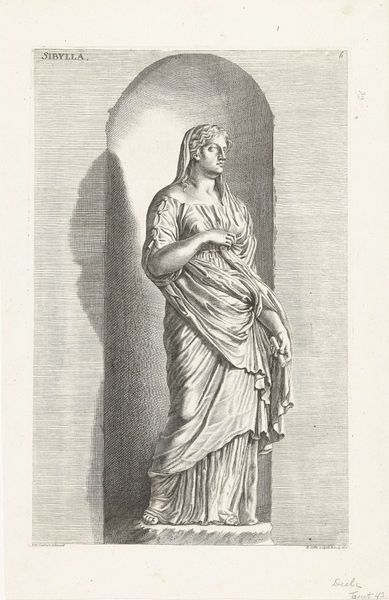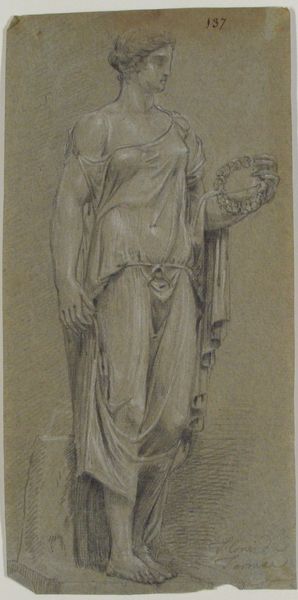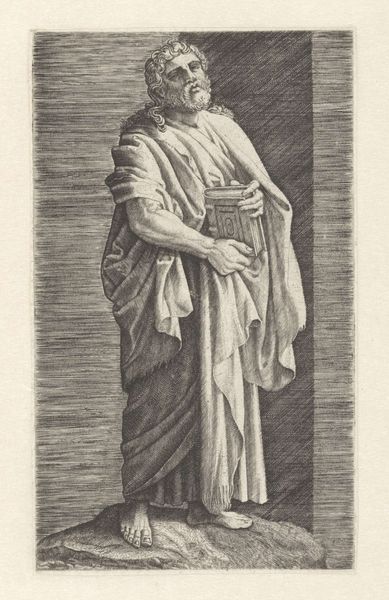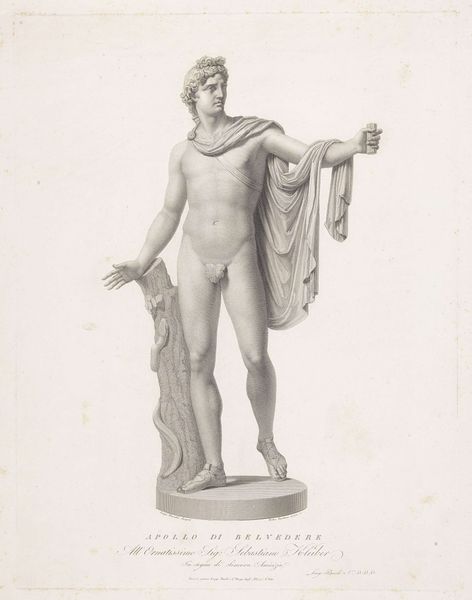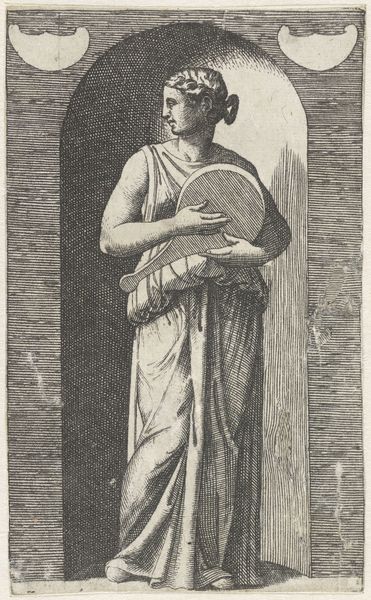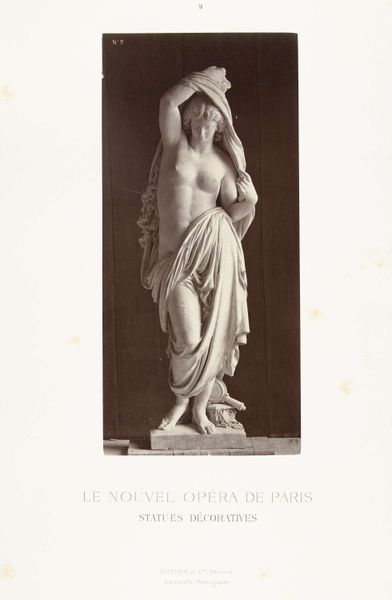
drawing, pencil
#
portrait
#
drawing
#
neoclacissism
#
figuration
#
pencil drawing
#
pencil
#
line
Dimensions: height 240 mm, width 168 mm
Copyright: Rijks Museum: Open Domain
This drawing of Apollo was made by Alexander Liernur in the late 18th or early 19th century. We can see the god standing in front of a lyre, which he holds with his left hand. Made in France during the Neoclassical period, this work emulates the artistic and intellectual interests of the time. The rediscovery of classical antiquity shaped social norms and political discourse, and the art institutions of the time promoted these values. Academic artistic training was rooted in the imitation of classical sculpture, with institutions like the French Académie playing a central role. Classical imagery and mythology helped shape both moral and aesthetic ideals. Apollo, the god of music, poetry, and light, was a particularly important symbol of enlightenment values. To better understand this drawing we need to look into the political and intellectual history of France at this time. A study of art institutions and their role in promoting particular social values would also be invaluable.
Comments
No comments
Be the first to comment and join the conversation on the ultimate creative platform.


